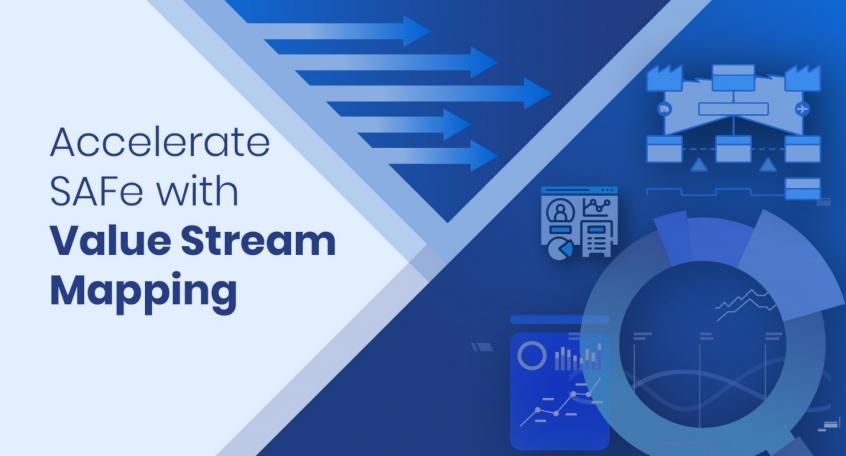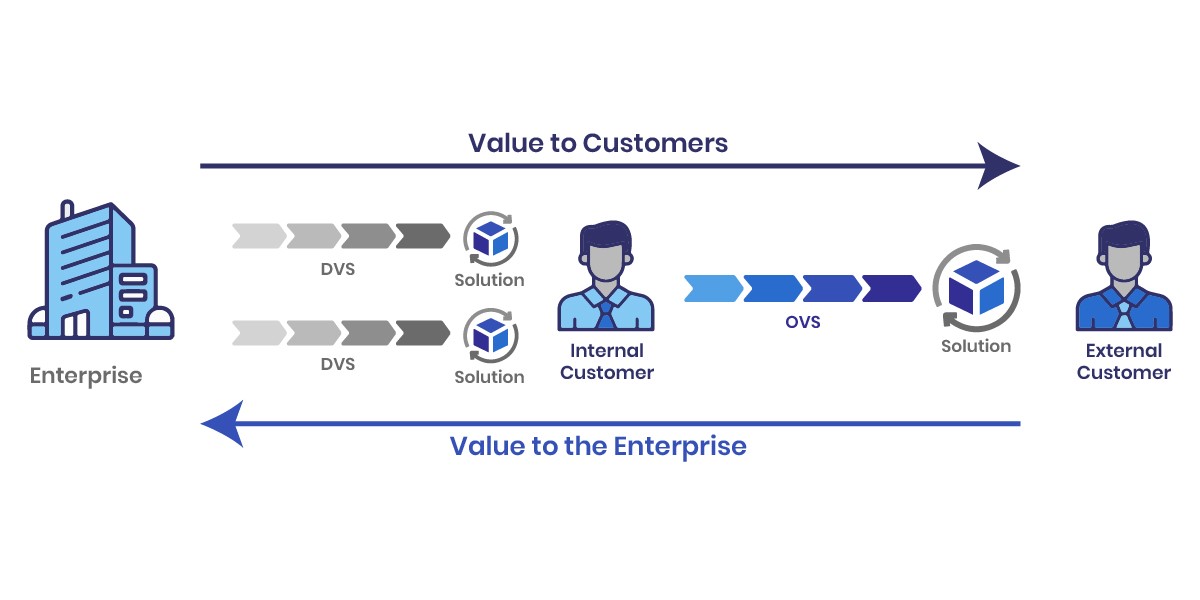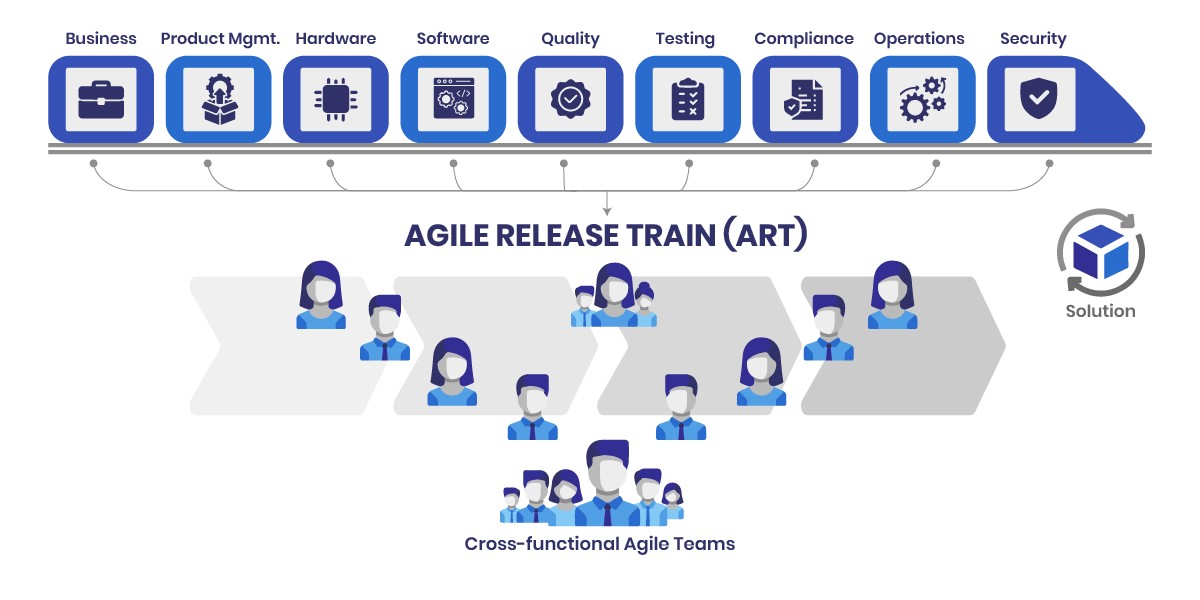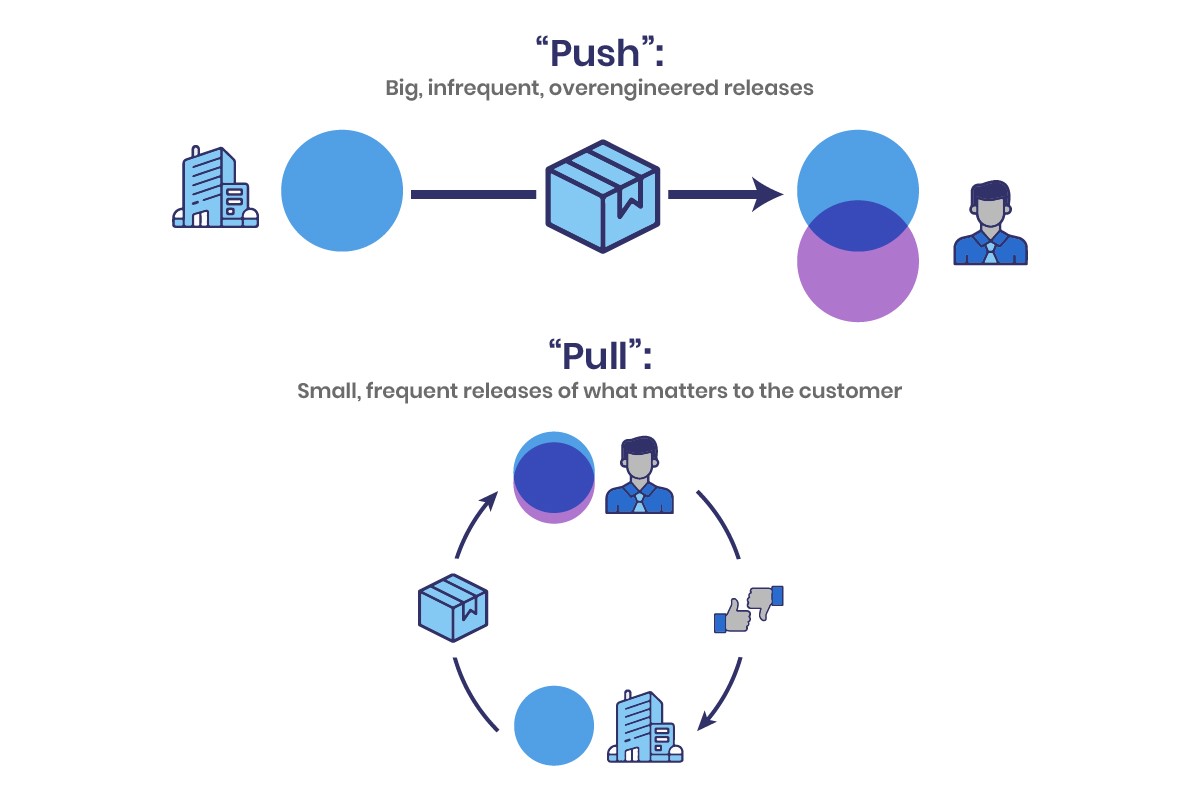
Value streams are thoughtfully devised combinations of several steps employed by an organization to deliver value through solutions. Each value stream flows towards a solution, whether it is a system, service, or product, with the intention to deliver value to customers and hence the name Value Stream. When it comes to SAFe, several value streams supported by Agile Release Trains (ARTs) are considered to define the optimal logical place. Hence, value stream mapping becomes an essential task to ensure efficient implementation of SAFe for guiding enterprises toward scaling lean and agile practices.
A business’s flow of value(s) must be maximized through a holistic view of your end-to-end delivery lifecycle. Still, it can be complicated in today’s digitally enabled business landscape, given the number of functional boundaries and cross-team dependencies. On the other hand, lean thinking is the foundation of SAFe VSM, as lean practices help optimize an organization’s operational efficiency. Value stream mapping can improve your delivery models that require multiple processes. VSM can resolve challenges by defining the continuous flow of work and seamless operations across an enterprise.
In this article, we will talk about how you can accelerate SAFe with value stream mapping. Let’s begin.
1. Specify Value Through Customer Centricity
SAFe works as a framework to guide enterprises toward scaling lean and agile practices, and the very first principle of lean thinking guides toward recognizing the value of understanding customer needs. The value of SAFe is not derived from projects or short-term initiatives, as it is the customers who make the overall decisions of value. Taking an economic view to encompass value exchange in two directions is critical for value stream mapping or value stream management.

Value streams can be of many types but here we will talk about two types:
- Development value streams
- Operational value streams
SAFe can help deliver value to internal customers through digitally enabled solutions, which further support the delivery of value to external customers via operational value streams. Value to internal customers is delivered through development value streams, which is the main area where SAFe practices work. Supporting the process of specifying value with customer centricity helps ensure delivery of constant and mutual value, considering how values are tuned with customer requirements. SAFe is accelerated as KPIs are employed to quantify the value delivered to customers.
2. Define Process Steps Precisely
Following the specification of value through customer centricity, the process of developing and delivering value needs to be defined. For each value stream, a specific set of steps is essential and could be unique, though it generally involves defining, building, validating, and releasing functionality incrementally. SAFe portfolios are used to organize value streams where budgets are directly allocated to the said streams for the effective delivery of value to customers tying back to your business objectives.
SAFe enables the organization to identify entire value streams for integrated delivery systems. Value stream mapping, which complements the objectives of SAFe as a lean-enterprise thinking, facilitates the effective development of Agile Release Trains to organize around value. Efforts are aligned toward managing one shared value stream in contrast to managing independent or fragmented streams. It makes the process of defining the set of steps simpler and more seamless to execute.

3. Locate the Source of Interruptions and Remove Them
All value streams must be saved from interruptions that delay the delivery of value to customers for your SAFe initiative to be successful, something that can be achieved with value stream mapping.
Value stream mapping allows teams to model the end-to-end sequence of tasks while measuring performance throughout – In this case, performance means the actual vs expected behavior of each of these tasks. Spotting the critical sources of interruptions and delays helps quicken the flow and deliver value in a faster and effective manner. At the end of the day, you want your value stream to deliver value to your customers. And if it not delivering value, then you should question the necessity for such value streams.
Several Lean-Agile techniques, often used through SAFe, can help rectify the sources of interruptions:
- Visualize the work-in-progress
- Minimize dependencies
- Work to receive faster feedback
- Perform tasks in smaller batches
- Minimize queue length
As these approaches are tested and implementing these can help you remove interruptions to accelerate SAFe through value stream mapping.
4. Implement Pull-Based Flow
Delivering appropriate value at the right time is essential for organizations to deliver solutions based thoroughly on actual customer requirements. This implies going in the opposite direction of the traditionally implemented push-based flows and going with the execution of pull-based flows.
Push-based flows are the conventional models where organizations tend to force solutions into the market on their assumptions of what customers need. On the other hand, pull-based flows start with an idea based on customers’ needs and your teams should work on delivering value by prioritizing small batches of work in order to gain quicker customer feedback. Feedback loop is very important to ensure incremental delivery of value.
Value stream mapping through the Kanban system enables organizations to work in a naturally pull-based environment and facilitates SAFe’s objectives of employing solution trains and agile release trains. Lean principles suggest pull-based flows to maintain regular time frames and tiny batches, which Kanban supports by restricting WIP at every step. It helps prevent delays, high transaction costs, and poor delivery of value.

Value Stream Leadership in SAFe
Value stream mapping and management is not easy, especially as it entails correct implementation of lean mindset. Accelerating SAFe with value stream mapping requires further attention to detail, needing dedication, expertise, and time.
Effective leadership to accelerate SAFe is essential to ensure proper execution of value stream thinking and requires the following set of skills:
- A lean mindset to understand lean thinking principles for improving value stream flows.
- Sufficient business knowledge to understand customer requirements, compliance factors, value metrics, and market forces.
- Proper technical knowledge to understand the solutions, the value they deliver, and the tools they employ.
- Enough process knowledge to understand activity sequences that turn ideas into value.
- Clever strategic influence to support, enable, and secure funding.
- Smart tactical influence to identify loopholes, required enhancements, mobilization of teams, lead change, and manage results regularly.
Effective value stream leadership in SAFe is essential for the execution of lean practices to deliver value on time and in a successful manner. Having strong and focused leaders in place ensures the issues are addressed (hopefully pro-actively or at least in real time), thus facilitating scaling agile through SAFe.
Conclusion
SAFe value stream management requires both technical strength as well as strong leadership abilities to ensure maximum value flow. Value stream mapping is a highly powerful tool to enable the establishment of value streams and the successful implementation of lean practices that facilitate SAFe. One such Qentelli’s AI based value-stream intelligence product is TED that plugs into SDLC ecosystem and brings data and insights from various tools into one real-time dashboard. It allows teams to see the flow of value and foresee its delivery to customers.
SAFe can be accelerated through value stream mapping by specifying value through customer centricity, defining process steps efficiently, locating the source of interruptions and removing them, and implementing a pull-based flow. With effective value stream leadership to complement these benefits, organizations can effectively accelerate SAFe.
SAFe and value stream mapping complement each other, owing to the common objectives involving lean principles. Value stream leaders play a crucial role, as their expertise contributes to the entire process with strategic and tactical influence.
